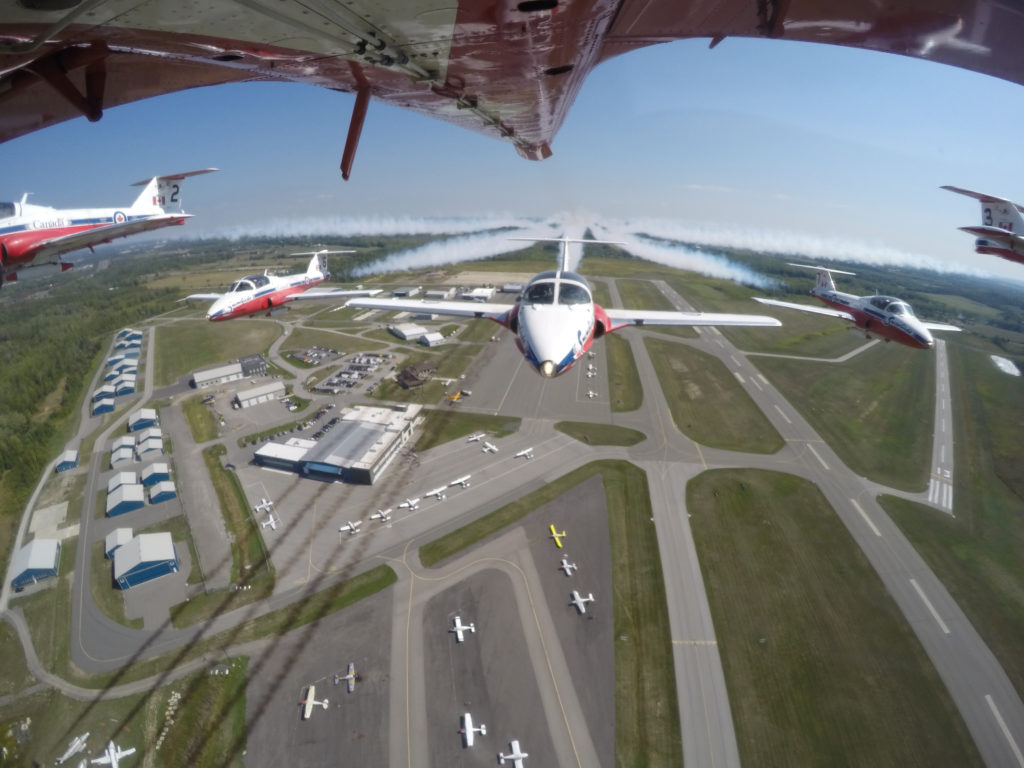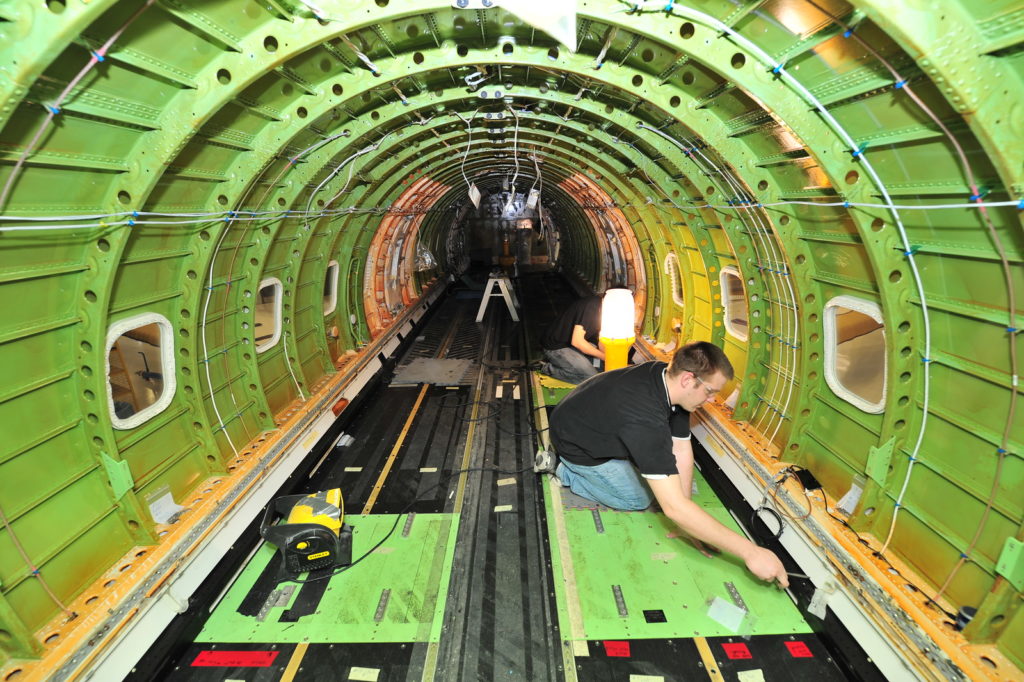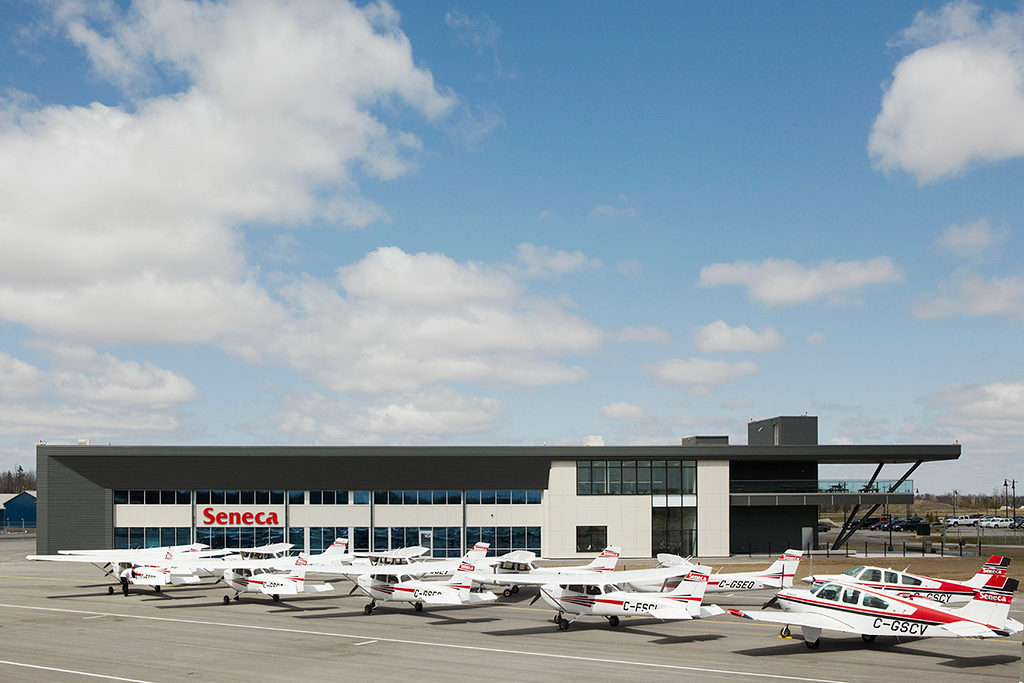Estimated reading time 8 minutes, 8 seconds.
Embracing the principle that “a mile of highway will take you a mile, but a mile of runway will take you anywhere,” private industry and three levels of government have invested nearly $40 million in Peterborough Airport (YPQ) since 2008, to strengthen and extend the airport’s main runway and increase local aviation employment.

Peterborough Airport now has the longest runway between Toronto and Ottawa (excluding CFB Trenton). More than 20 airport businesses now employ about 425 people, up from 250 people in 2008, and the airport now contributes about $66 million to the local economy (GDP) through direct and indirect employment.
The airport “is becoming a key driver of economic growth in our community if we stay focused and proactive,” said Trent Gervais, chief executive officer of the Loomex Group, which manages the city-owned airport.
The second annual Peterborough Aerospace Summit, held on Sept. 29, 2017, was a platform to update community and aviation stakeholders on airport development plans.
Big Picture
Howard Eng, president and chief executive officer of the Greater Toronto Airports Authority (GTAA), told Summit attendees that Toronto Pearson International Airport (YYZ) is the busiest airport in Canada today and the 32nd busiest in the world, and “will leap to the top 10 in North America” relatively soon.
Eng said the GTAA supported the creation of the 11-member Southern Ontario Airport Network (SOAN) this year, as a vehicle to address future passenger, cargo and aviation demand.
About 44.3 million passengers used Pearson airport in 2016 and 80 million are forecast by 2035. The airport now ranks as North America’s second-largest international gateway after John F. Kennedy International Airport in New York.
Origin and destination passenger travel will steadily increase as the Ontario population doubles to 15.5 million and the provincial economy grows to $1 trillion (GDP) by 2043. Connecting traffic at the hub will also grow, as new routes are added to the U.S. and overseas.
Together, the SOAN airports handled 49 million passengers last year (including Toronto Pearson) and will serve about 110 million passengers by 2043.
As Pearson reaches capacity limits, passenger, cargo and other services will migrate to regional airports, because “in southern Ontario it is hard to build new airports,” said Eng.

Each airport community needs to consider how they can get a share of this business, he added.
Industrial Growth
With the contribution of $28.6 million from three levels of government, Peterborough Airport extended and strengthened its runway from 5,000 to 7,000 feet, with work completed in 2011.
The biggest airport tenant is Flying Colours Corp., and it has expanded six times since 2008 “and each time they have created more jobs,” said Gervais.
The runway extension was designed to help Flying Colours pursue work on larger business aircraft, including Boeing 737s and Airbus A320s. The investment helped Flying Colours become a Bombardier Authorized Service Facility and a Bombardier preferred completion centre for Challenger and top-of-the-line Global business aircraft.
When Seneca College started looking for a new home for its professional pilot program, Peterborough provided an opportunity to co-locate flight training and classroom instruction in a new state-of-the-art facility, said Lynne McMullen, director of business development at the Seneca School of Aviation.

One of the benefits of the move from Buttonville to Peterborough in January 2014 was that students could now train outside the Toronto Terminal Area at a less congested airport.
Some 150 student pilots train at the Peterborough Campus on 19 single- and twin-engine aircraft as well as 10 Frasca fight training devices, with four G1000 Cessna 172Fs and a new Frasca simulator on order.
Annual airport movements have grown tremendously since Seneca arrived, from 30,160 in 2013 to 60,000 in 2016.
The local pilot community is also increasing, with 20 new hangars constructed for general aviation aircraft in the last few years and more building sites available.
Passenger Service?
In 1975, scheduled airline service began linking Peterborough Airport with Ottawa and Toronto Island Airport. Scheduled service ended decades ago, but Scott Stewart, owner of Stewart Travel, wants to “make Peterborough Airport great again.”
Stewart, 18 months ago, decided to celebrate the 40th anniversary of his travel company with a group charter to New York City, but “nine airlines turned us down.”
Canadian North was interested and two Boeing 737 flights with 136 seats quickly sold out. The terminal at Peterborough was designed for small regional aircraft, so charter passengers were processed in the Loomex Group office complex and bussed to the aircraft. Stewart employed 61 staff to process each flight.

Ten charters have since been completed to seven U.S. and Canadian destinations on Air North, First Air, Nolinor and Porter, and flights to five destinations are planned for 2018.
Stewart estimates there are 1.5 million people living within the airport’s catchment area, which includes the east side of the Greater Toronto Area.
In late September, Peterborough Airport launched an online survey to quantify demand for a new passenger service to Billy Bishop Toronto City Airport with connections to Porter Airlines. Local passengers flying from Toronto Pearson usually have to leave Peterborough four hours before their flight.
“Passenger service was not part of the original 2008 business plan, but we are now looking at this,” said Gervais.
The City of Peterborough has been buying land to expand the airport property from 340 acres to more than 800 acres, to create a noise buffer and support future industrial growth.
A new taxiway on the northeast side now provides access to a new industrial development site suitable for facilities in the 100,000 to 200,000 square foot range. In 2014, Flying Colours announced plans to build a new 120,000 square-foot facility in this area, but has yet to break ground.









The constant noise from the flight school planes has destroyed the peacefulness of the rural areas….the planes never stop circling low over homes!!!!
I think that was the reason Oshawa rejected Seneca settling there as this would affect residents.